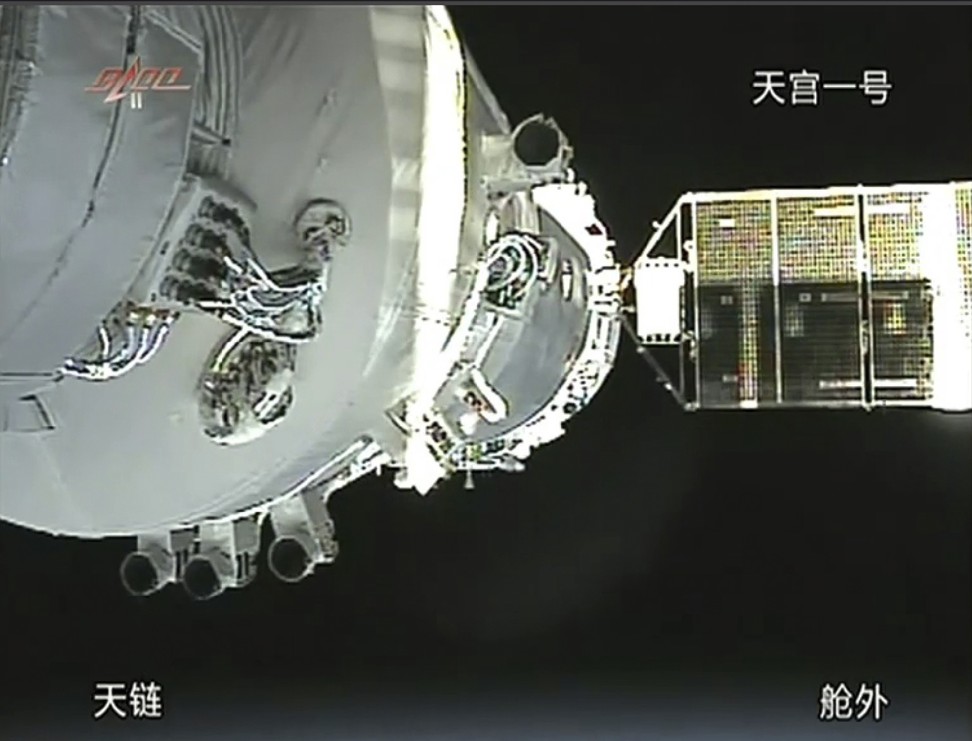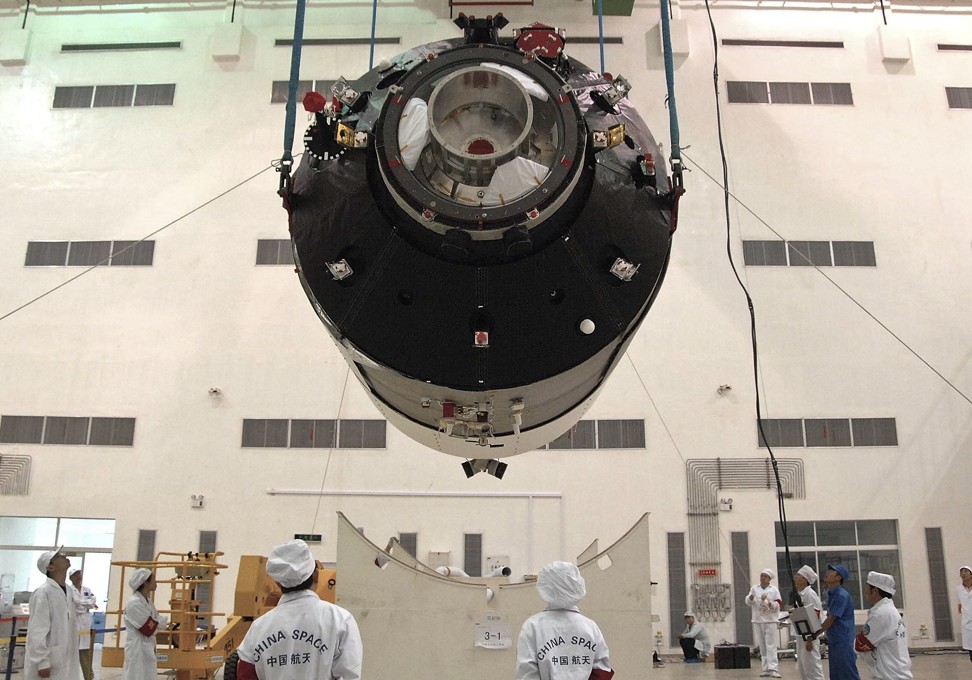
Out of control Chinese space lab Tiangong-1 could fall to Earth on Sunday
US state of Michigan has put police teams on standby, warns public not to touch ‘toxic’ debris from the spacecraft
One of China’s biggest spacecraft in orbit is expected to re-enter the Earth’s atmosphere as early as Sunday, the China Manned Space Agency said, as emergency services in Michigan were put on standby for fear it was heading towards the US state.
Tiangong-1 is currently hurtling towards Earth, and the agency on Saturday said it was at an altitude of about 179km, and estimated to land on Monday – though it could happen a day before or after.
The European Space Agency forecast the space lab’s re-entry for around 7.25am on Monday, Hong Kong time – later than previously expected. It said the density of the upper atmosphere, through which Tiangong-1 is moving, had not increased as predicted, which would have dragged the spacecraft down sooner.
California-based non-profit Aerospace Corporation meanwhile estimated it would land around 12.15am on Monday, with a variation of nine hours either way.
While most of the 8.5 tonne structure is likely to burn up as it re-enters the atmosphere, Michigan Governor Rick Snyder said on Friday that “there is concern that debris could make landfall”.
Based on its current trajectory, scientists have said the space station could land anywhere from Australia to the United States, with the southern part of Michigan’s Lower Peninsula included in the strip of the US – from northern California to Pennsylvania – where it might crash down.
“While the chances are slim that any of the debris will land in Michigan, we are monitoring the situation and are prepared to respond quickly if it does,” said Chris Kelenske, deputy director of the state’s police, emergency management and homeland security division.
“The state will rely on its existing satellite re-entry response and recovery plan for any necessary response protocols,” he said.
According to a statement by the state government, the debris could contain hydrazine, which is a highly toxic and corrosive substance. All matter thought to have come from the space station should therefore be considered hazardous, and anyone who suspects they have encountered some should call 911 and maintain a safe distance of at least 150 feet (46 metres).
On Monday, the China Manned Space Agency said the space lab was expected to re-enter the Earth’s atmosphere “between March 31 and April 4, 2018”.
The announcement was the first time Chinese authorities had admitted the spacecraft was out of control on its return to Earth.
Tiangong-1, which means “Heavenly Palace 1” in Chinese, was launched into orbit on September 29, 2011. In the years that followed it was used in docking and orbiting experiments as part of China’s ambitious space programme, which aims to put a permanent space station in orbit by the early 2020s.
The 10-metre-long craft, about the size of a school bus, cost hundreds of millions of yuan to build. The laboratory comprised several modules and was able to support up to three astronauts for two weeks at a time.
In its lifetime it was involved in six rendezvous and docking missions with manned Shenzhou spacecraft, and made “significant contributions to the development of China’s manned space mission”, space authorities said.
On March 16, 2016, Tiangong-1 terminated its data service, officially ending its mission and starting its orbital decay.
Nasa’s 85-tonne Skylab space station is the largest spacecraft ever to make an uncontrolled return to Earth. Several large pieces of debris from it crashed into the Australian town of Esperance in 1979.



